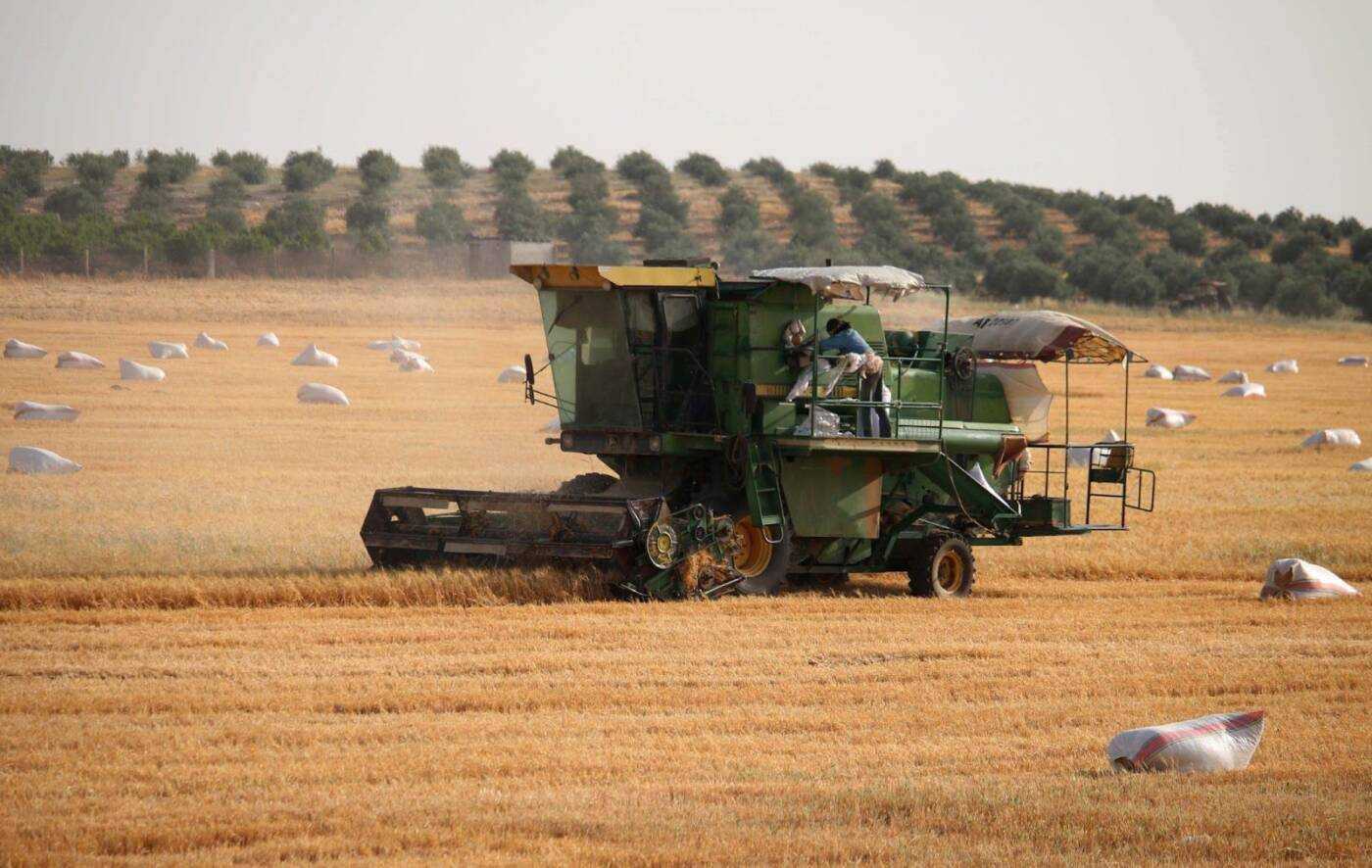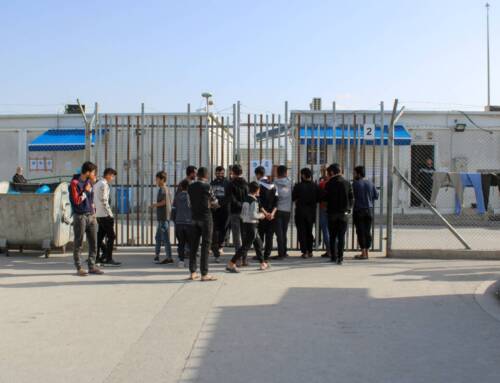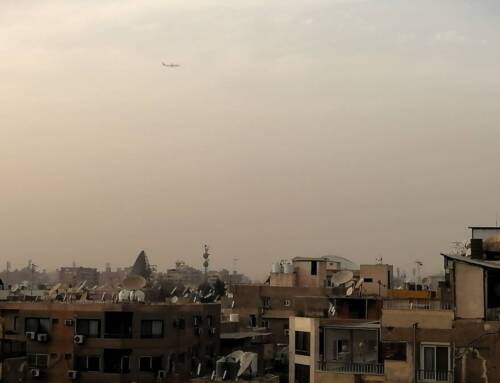‘Granary of Rome’: Can the Houran’s wheat survive climate change and war?
Syria's fertile Houran was once so productive it was called the "granary of Rome.” Today, farmers in southern Syria battle climate change and the economic fallout of war to make a living and preserve this traditional agriculture.
26 June 2023
PARIS — Every afternoon, on the plains outside the northern Daraa city of Inkhil, Abu Muhammad inspects his wheat fields. He worries about fires, and losing his crop, though he does not know if it will be worth his investment at the price set by the Syrian government.
Last November, Abu Muhammad, 52, plowed his land and sowed wheat. He hoped the December and January rains would water his crop. But weak rainfall and high temperatures spoiled the season, forcing him to plow and sow his land once more in February, he told Syria Direct.
Abu Muhammad has been growing wheat for 20 years. He is one of thousands of farmers in the Houran—a fertile plain in southwestern Syria that is one of the country’s most important agricultural areas. There, changes in the local climate have impacted wheat crops this growing season.
It was only the latest blow, adding to a series of challenges arising from the war that followed Syria’s 2011 revolution: a crisis in the availability of fuel, fertilizers and pesticides, rising prices and costs of labor and the deterioration of the Syrian pound.
The wheat season’s success is crucial for Abu Muhammad and his family. It is their main livelihood, alongside barley and livestock rearing. More than that, the Houran’s wheat is loaded with meaning: a crop first cultivated near the banks of southern Syria’s rivers in the ninth millennium BCE.
While northeastern Syria is historically the country’s bread basket, the country’s south has also long been associated with wheat cultivation. For Abu Muhammad, it is part of an ancient connection to the land—one that faces mounting challenges.
Declining production
At the start of June, the Syrian regime Minister of Agriculture Mohammed Hassan Qatana said that, due to an expected increase in the local wheat harvest, his government planned to import half the amount this year as in 2022—when it imported around 1.5 million tons, mostly from Russia. But the reality of the current wheat season does not reflect Qatana’s optimism, four farmers in Daraa told Syria Direct.
Over the past decade, the productivity of the farmers’ irrigated and rain-fed wheat crops has significantly declined. Abu Omar, 52, said the production of one dunam (1,000 square meters) of his land in the northern Daraa countryside city of Jassim “decreased by half over the past two years.”
Abu Omar has been growing wheat on 120-140 dunams of his land for more than a quarter century. Until 2017, one dunum of rain-fed wheat produced an average of 200-400 kilograms. Over the past five years, that dropped to 150-250 kilograms per dunam, he said.
Irrigated wheat fields also became less productive over the same period, according to Saad, a 50-year-old farmer who has been working his land near Inkhil city for the same amount of time. One dunam of his irrigated wheat produced 350-1,100 kilograms before 2011. But in the years since, it has ranged between 350-750 kilograms.
For irrigated wheat, drops in production can be attributed to several factors, including each farmer’s attentiveness to the land and the availability of fuel, water, fertilizer and pesticides, Saad said. How many times a season the land is plowed and watered also plays a role, alongside climate factors, he added.
Before 2011, Saad plowed his land “three times a season, compared to once during recent seasons.” He used to water his land three times a year, fertilizing it with every watering, but now does so once a year.
Syria produced around one million tons of wheat in 2022, down 75 percent from before 2011, according to the United Nations’ Food and Agriculture Organization (FAO).
Regime-controlled parts of Syria—which make up around 70 percent of the country—require an estimated 3.2 million tons of wheat per year, agriculture minister Qatana told Russia’s Sputnik news agency in July 2022. Two million tons are needed for bread alone, while other quantities are needed for seeds–in addition to bulgur, freekeh, semolina and other grains.
Figures and testimonies provided by farmers in southern Syria point to the continued decline of wheat production. They paint a picture that does not reflect the regime’s current estimates of improved yield.
In 2021, President Bashar al-Assad described 2021 as the “year of wheat,” expecting a productive season. Instead, the “year of wheat” saw an acute bread crisis sweep through regime-controlled areas. Syria’s wheat production fell to 1 million tons: the lowest in 50 years, according to the FAO. The year before, the country produced 2.8 million tons, and more than 4 million tons before 2011.
Climate change
This season, irrigated wheat fields cover about 10,500 hectares, an increase over 9,257 last year. The area covered by rain-fed wheat has grown too, from 80,000 hectares to around 83,000 hectares, according to the Daraa Agriculture Directorate.
This slight increase in the area planted with wheat—between two and four percent—is due to increased demand for wheat cultivation from farmers due to the high costs of other irrigated crops. Even so, wheat production has clearly fallen.
An official source in the regime’s Daraa Agriculture Directorate told Syria Direct rain-fed wheat production ranged between 150 and 200 kilograms per dunam from 2012 to 2018, but fell to an average of about 50 kilograms over the past three years.
The official, who asked not to be identified for security reasons, attributed the decline to changes in the local climate: “a decrease in the annual rainfall rate, lack of rain during the first and second months [of the season, a crucial period for wheat farming] and rising temperatures.”
To grow, “wheat needs very low temperatures followed by rain,” Yaman Abdulrahman*, an agricultural engineer in Daraa’s Inkhil city, told Syria Direct. “Up until five years ago, we started the growing season with a light rain, followed by bitter cold, and then sufficient rainfall. This gives the seeds the ingredients for growth and production.”
Today, “this climatic arrangement no longer exists. The climate is volatile, there is a significant delay in the cold and precipitation,” Abdulrahman said. The current season “would be nearly the worst, if not for the rains at the end of it. Even so, this rainfall does not give the wheat and seeds the ability to produce well.”
As part of his work, Abdulrahman monitors the height of wheat in the Houran plain. “Five years ago, the wheat reached about 1.5 meters in length, but the best wheat this season is under 80 centimeters,” he said.
In many fields, mechanical “harvesters won’t be able to work, because of the short wheat. Its height must be at least 40 centimeters for the harvester to harvest it,” Abdulrahman added. “Farmers will bear additional costs due to the deterioration in the quality of the crop, and its low price because it contains dust and hay from manual harvesting.”
Worsening wheat yield and growth is due to “rain not falling, high temperatures in December, January and February, and delayed frosts,” Abu Hassan, an agricultural engineer in the northern Daraa countryside, said. He pointed to the 2022 rainy season, when “the frost happened in March and April, when the wheat spikes were starting to form. This caused the grains to atrophy inside the spike,” impacting “their size, which did not reach the normal level, quality and weight,” he told Syria Direct.
Damage to this year’s wheat crop prompted many farmers, as in Abu Muhammad’s case, to re-plow and sow their land in February, the Daraa Agriculture Directorate official said.
From 2007 to 2021, temperatures in Syria rose by an average of 1.02 degrees Celsius from 2007 to 2021 across the country, while the increase in Daraa province was an average of 1.20 degrees.
In 2023, the level of rainfall fell to 64 percent of what it was during the 2018-2019 growing season. Data provided by the Daraa Agriculture Directorate source and other figures collected by Syria Direct show fluctuations in yearly rainfall averages that differ from the official bulletins issued by the regime’s General Directorate of Meteorology.
While the rate of rainfall increased over the past five years from its level between 2007-2017, delayed rains and rising temperatures have negatively affected the quantity and quality of wheat yield, Abu Hassan said.
Seed crops have been damaged as well. Samer al-Zamil, the director of the General Organization for Seed Multiplication (GOSM) branch in Daraa’s Izraa city, told Syrian media last month the body expects to buy 11,000 tons of wheat from contracted farmers this year. This is down from the 14,000 tons it was aiming for.
Read more: Seeds of Syria: How a birthplace of agriculture lost troves of its native crops, and why we should all worry
The GOSM also expects to buy 300 tons of barley instead of 900 tons, due to “the lack of rain and drought that prevailed at the start of the season, and some fields not meeting the acceptable specifications.”
Role of the regime
Climate conditions have long been used as a scapegoat by Syrian President Bashar al-Assad and regime officials to explain worsening wheat seasons. But while climate changes play a key role, government policies and decades of deep-rooted corruption in state institutions—alongside the unequal distribution of subsidized materials to farmers and human encroachment on the environment—cannot be overlooked.
For many decades, the Syrian regime boasted of self-sufficiency, especially in wheat. But even during the last three years before the 2011 revolution, Syria had become a wheat-importing country.
To date, the Damascus government has not announced any plan to counteract climate shifts and resulting damages to crops. On the contrary, farmers Syria Direct spoke to criticized government policies and procedures in allocating and delivering subsidized materials for farmers, and in buying their crops from them.
Abu Muhammad, the farmer in Inkhil, said he suffers from “high labor costs, the price of fuel for tractors and harvesters, the worsening security situation and fear of my crops burning.” He grows rain-fed wheat because he “cannot irrigate the wheat due to the expense of fuel [to run pumps] and low groundwater levels.”
“Without a comprehensive national plan” to combat the impact of climate change, “every farmer has to limit these changes himself, which is costly, especially for land far from artesian wells and water sources,” agricultural engineer Abdulrahman said.
When insufficient rain falls during December and January, “the wheat needs irrigation to compensate for the rainwater,” Abdulrahman said. In the event of grain atrophy due to delayed cold and frosts, “the land must be irrigated to ensure growth.”
Lack of access to conventional and alternative energy sources—fuel, electricity and solar panels—impacts irrigated crops in Daraa because they are needed to run irrigation pumps. The Damascus government provides subsidized agricultural diesel (mazot) in limited quantities, which vary according to the type of crop and area of cultivation.
Four Daraa farmers said these subsidized fuel allocations only cover 10-15 percent of their needs, and that the state often does not fulfill its commitments.
Wheat’s economic viability
This year, like every year, parties to the conflict in Syria are competing to purchase the country’s wheat. For 2023, the Damascus government set its purchase price for wheat at SYP 2,300 per kilogram ($0.26 according to the current parallel market exchange rate of SYP 8,850 to the dollar).
According to the Council of Ministers, “the determination of this price came as a result of a precise calculation of the real production cost, given the support provided to the agricultural sector in terms of seeds, fuel and fertilizers, in a way that ensures a profit margin for the farmer.” The pricing aimed at “encouraging delivery of the crop and recovering as much of the output as possible.”
Muhammad Majdi al-Jazairi, the head of the Daraa Farmers’ Union, told Syria Direct farmers were not satisfied with the state’s wheat price. Local growers have also criticized “the owners of combine harvesters charging more money than the pricing set by the executive office in Daraa province,” he said.
The provincial government set the wages for harvesting one dunum of irrigated wheat at SYP 60,000 ($6.70) and SYP 40,000 ($4.50) for rain-fed wheat. But in reality, the owners of diesel-run harvesters charged between SYP 100,000 ($11.20) and SYP 150,000 ($16.90), farmers said.
Two Daraa farmers—one of whom grew rain-fed wheat this season and the other irrigated wheat—provided Syria Direct with information about the cost of growing one dunam of the crop and how much they expect to reap based on preliminary estimates. Compared to the price for one kilogram of wheat set by Damascus, farmers growing rain-fed wheat face a loss of SYP 58,000 ($6.60) per dunam, while irrigated wheat yields an expected profit margin of SYP 408,000 ($46).
To recoup his losses, Abu Muhammad—the farmer in Inkhil growing rain-fed wheat—intends to sell his crop to traders on the black market for SYP 3,000 ($0.33) per kilogram. “The state price isn’t feasible,” he said.
The black market price may make “cultivating rain-fed wheat feasible to a small degree,” Abu Omar, the farmer from Jassim, echoed. But next year, he plans to plant most of his land with barley, because “its yield is higher, and it tolerates drought and heat.”
The outcome of the current wheat season will determine whether Said al-Hourani, another farmer in Jassim, plants wheat next year. “If irrigated wheat produces little this year, I will plant half my land with barley, chickpeas or beans next year,” he said.
“The future of wheat cultivation is in danger,” engineer Abu Hassan warned. “The government should intervene as soon as possible and provide diesel and fertilizer to the farmers, especially given climate change, to protect against diseases and temperature differences.”
The price of wheat “must be raised to encourage people to keep growing it,” he stressed. “It is a viable crop, but not as it should be.” If the current conditions persist, “the production of wheat will go down by 30 percent in the next five years,” he added.
Abdulrahman agreed, warning “the Houran is headed for a zero season if the climate continues to fluctuate and rain decreases.” He urged farmers to care for the land by plowing it at least three times a year and using fertilizer and pesticides “to avoid pests and damage.”
Syria’s fertile Houran was once called the “granary of Rome,” its wheat enough to sustain the ancient city and send grain to Egypt and houses of worship in the days of the Roman Empire. Under the Ottomans, it was a major source of the crop, with Hourani wheat transported to Anatolia, Astana and Damascus.
Today, the heirs to this legacy are struggling to preserve this traditional agriculture, their livelihood for thousands of years. Abu Omar does not want to completely stop growing wheat. It is “an occupation passed down to us, generation after generation, and it cannot be abandoned.”
*Pseudonym used for security reasons.
This report was originally published in Arabic and translated into English by Mateo Nelson.







